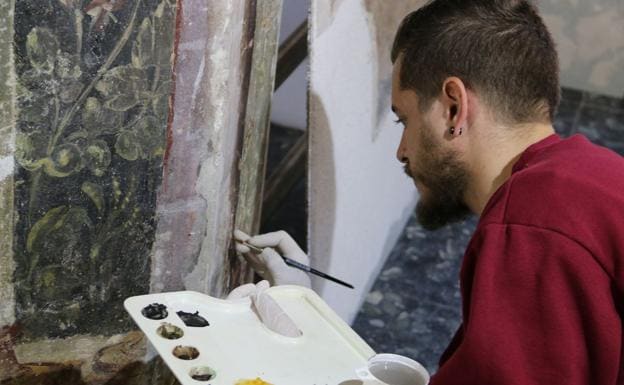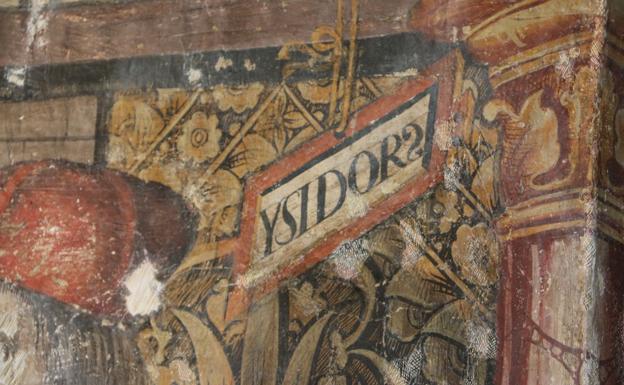We reproduce below the news "Doña Sancha recovers the color of her camera". by Inés Santos, which you can also find on the website www.leonnoticias.com.

The chamber of Doña Sancha in San Isidoro will again look the way it did in the XVI CENTURY. The paintings that have been rolled up and well kept since the sixties have finally seen the light of day.
An extensive study by the technicians of the Intervention Service of the Castilla y León Heritage Unit It was through the pictorial ensemble of San Isidoro, which included the Chamber of Doña Sancha, that they became aware of the paintings that had been removed. At that time they began to work with these paintings and developed the knowledge and the possible intervention proposal that could be made in the Chamber.
It was only two years ago when the Heritage Unit of Castilla y León began to plan the intervention work to recover the image that the Chamber presented centuries ago. Thanks to this study, more than 100 meters of mural paintings to be unveiled by the end of the year.
The paintings correspond to the decoration that the Chamber of Doña Sancha had when in the 16th century it functioned as the Chapter Hall. In the 1960s, during one of the interventions carried out in San Isidoro, the recovery of a Romanesque image of the whole of the church was proposed. Collegiate and decide to carry out a stripping process on the paints, which will remain stored in the Chapel of La Magdalena of the Basilica.
It was also at that time when it was decided to modify the layout of the Renaissance stone doorway that connected the Chamber with the library. "It was a change in criteria," he says. Carlos Tejedor, technician of the Intervention Service of the Castilla y León Heritage Unit.. But who emphasizes that thanks to the work of removing the paintings, today León can recover this small treasure.
The stone cover was disassembled stone by stone to put it back in the exact place and at this point it is almost finished. "The exact point is obtained through the data of the wall and the paintings themselves that have given us the information of the place where the cover was placed."explains Carlos Tejedor.
Several jobs are keeping the professionals who are carrying out the restoration busy. Initially, the intervention is being done on the torn paintings. "It consists of re-supporting paintsWhen a mural painting is removed from its natural support, which is the wall and the mortar; now the procedure is the reverse," explains the technician.
A new stand-alone bracket will allow the restoration and the subsequent maintenance of the paintings in their original location. The walls of the Chamber of Doña Sancha will again host this work of more than 100 meters of color dating from the sixteenth century.

Subsequently and through a careful and delicate process of scratching that imitates the environment of the colors, some of the gaps in the work are recovered. Only those in which the definition of the context gives the technicians the necessary information to know what was there. With this process, one of the slowest, it will be possible to realize a fully comprehensive reading of the paintings. But at the same time, the restored part will be discernible.
Some of the paintings are already prepared to be installed in the chamber of Doña Sancha, and it will be there when the encounter between the whole composition will be worked on. The larger fragments reach almost five meters, in these cases most of the work will be done in the chamber, since the accesses to the chamber prevent the displacement of rigid supports of such a size.

A restoration that adds to the long history of works carried out in the Collegiate Church of San Isidoro, but which will have a very special meaning. "We are at a very important moment in historyThe restoration of the Royal Collegiate Church of San Isidoro has a long history because of the historical, monumental and artistic significance of this space, not only for León, but for the whole of Europe", said the Abbot of the Cabildo de San Isidoro, Francisco Rodríguez Llamazares.
"We are all very excited to see it finished," explained the Abbot, because after so many interventions in the Basilica, it will give it a new look. truly spectacular" visual impact.
